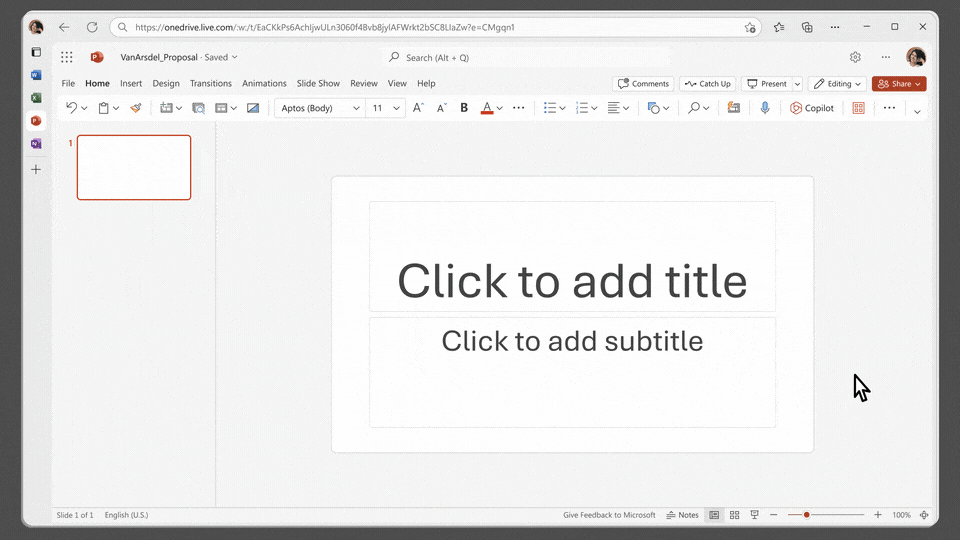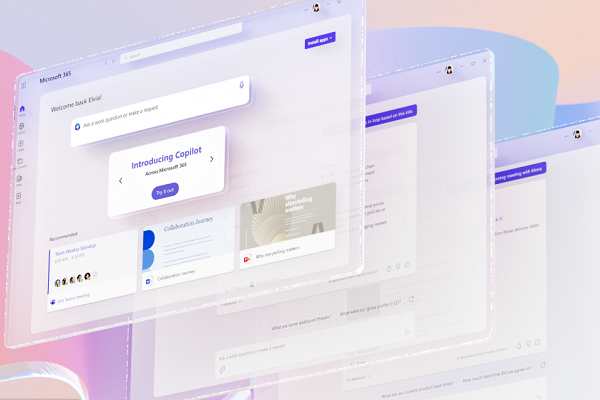Microsoft 365 Copilot Infuses Generative AI Into Every Office App

Microsoft has unleashed a flood of new generative AI features called Microsoft 365 Copilot for its suite of productivity software. Copilot encompasses AI assistance for all of the applications, including Microsoft Word, Outlook, Excel, PowerPoint, and Teams.
Microsoft 365 Copilot
Microsoft 365 Copilot, which shares just a name with the GitHub coding assistant, is designed to help users produce and organize content, including documents, emails, and presentations. The AI’s integration with Microsoft’s services allows it to turn raw data into Excel graphs, design and animate a PowerPoint presentation, and translate a meeting transcription into a long-term strategic plan for a company. The natural language prompts only require a vague description of the user’s goal and a connection to the relevant documents or meeting transcriptions to gather the data, as seen in the PowerPoint example at the top.
The obvious analogy is Microsoft Clippy, the old animated paperclip that would guess what a user was trying to do and link them to a guide on how to do it. Copilot doesn’t just point at a map, though. It hops in the car and drives you to your destination, then walks you through how it got there. You can see an example of how Copilot operates in Excel here.
Generating Wait
As excited as Microsoft seems about Copilot, it’s currently limited to 20 business customers, with more businesses getting access soon. The tech giant gave but no indication of when the average user will be able to employ Copilot or if it will be an additional cost for Microsoft 365 subscribers. The enterprise-first approach matches Microsoft’s generative AI strategy for its other products, however. as it first introduced Copilot as a synthetic text generator for its Dynamics 365 enterprise resource planning (ERP) platform and the application and workflow system Power Platform.
The new Copilot and its generative AI features have been in the works for a while, with related tools rolling out piecemeal over the last few months. For instance, Microsoft Teams Premium subscribers already have an AI assistant to take notes, and OpenAI’s models have been integrated with Azure since January. Despite the delay, the consumer-facing Bing generative AI chatbot and its expansions have ensured consumers will stay interested. On the other hand, a long waitlist gives Google a chance to catch up after some initial embarrassment when introducing a generative AI chatbot named Bard. This week, Google released generative AI tools for Gmail and Google Docs, with other Google Workspace products to follow. Microsoft may need to entice people to switch from Google if they take too long, but the company links the extra time to necessary privacy and security as much as feature development.
“Copilot combines the power of large language models with your data and apps to turn your words into the most powerful productivity tool on the planet,” Microsoft corporate vice president Jared Spataro said. “By grounding in your business content and context, Copilot delivers results that are relevant and actionable. It’s enterprise-ready, built on Microsoft’s comprehensive approach to security, compliance, privacy and responsible AI. Copilot marks a new era of computing that will fundamentally transform the way we work.”
Follow @voicebotaiFollow @erichschwartz
New Microsoft Teams Premium Uses ChatGPT to Take Meeting Notes









